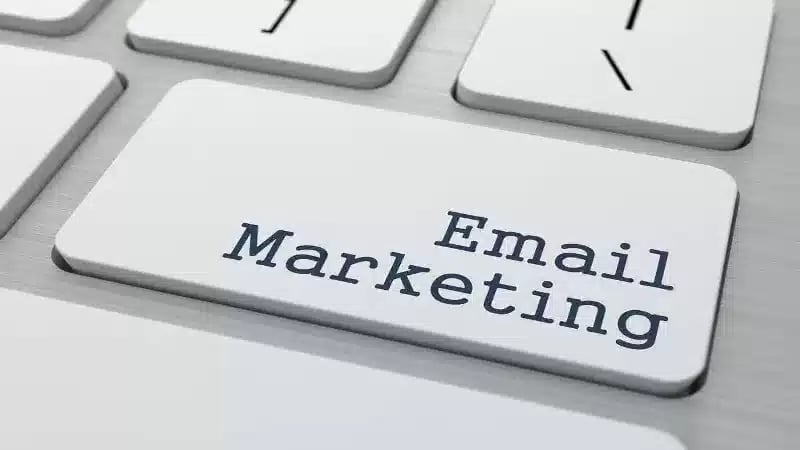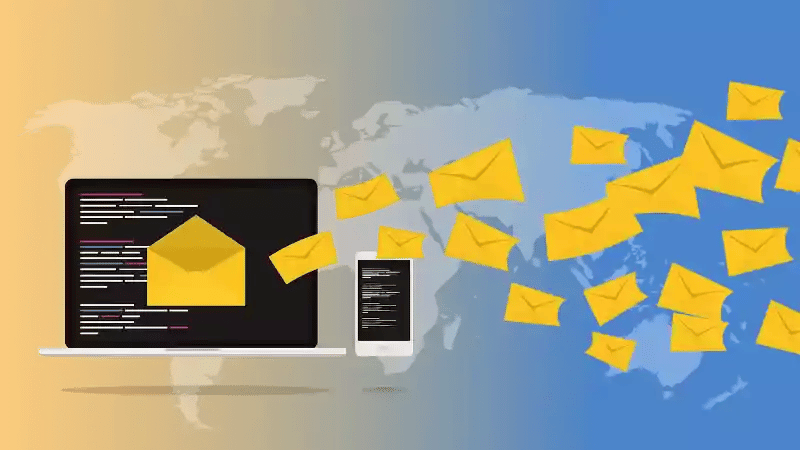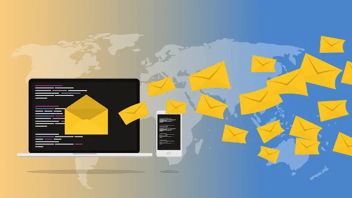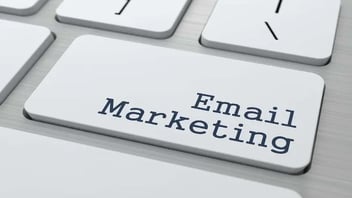Your Ultimate Guide to Email Marketing
Marketing via email gained traction around the turn of the 21st century as personal email accounts became common. Perhaps you've wondered how to best go about marketing via email or whether or not email marketing is still relevant. These are valid questions. What follows are some concrete answers for you.
Is Email Marketing Dead?
Email and, by extension, email marketing is in no way dead. We would argue the opposite: there's never been a better time to step up your email marketing game.*
Email's Not Going Anywhere
That little "*" is there for a reason. While we wholeheartedly support email as part and parcel of any well-rounded marketing campaign, the other truth is that the attitudes around email have changed in recent years. Open rates for many marketing campaigns are dropping; it's true. But at the same time, email as a medium is gaining popularity. 73% of Millennials say they prefer to receive marketing information via this channel over all others (social media, texts, hard copy, etc.).
On top of that, a colossal 99% of the general internet-using public uses email and says they check it at least once every day.
Pay Attention To User Experience
Here it is, the caveat you knew was coming. Email is a solid choice of medium to spread your message. Not only that, it's an incredibly good way to reach the Millennials generation, the largest to date.
But you need to do a few things differently.
And most of those things revolve around the user experience; that is, it's about how your reader interacts with and digests the information you're sharing. For example, if you only send emails when you have a sales pitch to make, you'll lose readers. Fast.
You've got to mix it up these days; send your contacts a regular newsletter full of interesting and relevant facts about your industry and your company's place. Send some exclusive deals for subscribers only. Send links to recently published think pieces on your blog.
All of this is to keep your audience engaged with your message. The exclusive deals show them that you value that they opted in, and the blog links show that you're doing more than just selling widgets.
And lastly, personalize it. From an eye-catching subject line to custom-tailored content, let your audience know that you get them and value their time and attention. Tell them you're not going to waste that trust by pitching them 24/7 or sending them links that don't matter to them or their lives.
Email Marketing Best Practices
So yes, when done right, email marketing remains a solid way to generate leads and convert prospects for your business.
Here are some of the best email marketing practices to help you generate more leads.
1. Never buy contact lists
The entire email campaign depends on open rates. If you're contacting people whose information you bought rather than earning the information from a previous interaction, you'll see the performance of your emails drop. Also, the GDPR (EU General Data Protection Regulation) requires each European recipient's consent before you reach out, and purchased lists usually don't have that consent.
2. Don't use no-reply in the sender's address
This prevents recipients from responding or opting out, which is a problem since CAN-SPAM (Controlling the Assault of Non-Solicited Pornography and Marketing Act of 2003) protects recipients' right to opt out anytime. Besides, your customers are likelier to open emails from someone, even just a first name. Don't make it harder for anyone to provide feedback.
3. Keep visual clutter to a minimum
Never use more than an absolute maximum of three fonts, and don't require recipients to scroll horizontally to see the entire email.
4. Optimize preview text
Customize the preview text, generally the first several words of the email body. Don’t let your email system insert messages you don't want as part of your preview text. This can usually be done via your marketing automation tool.
5. Use an email signature
People are inclined to read and listen to your email if they know it came from someone, so include a real person's signature.
6. Maintain a clean email list
Your open rate sinks when you keep addresses for people who have not opted out but never open your emails. Regularly, find those who have not engaged for a specified period and purge them from your list.
7. Pay attention to your above-the-fold content
As many as 70% of recipients won't see the call-to-action (CTA) if it's below the fold (requires scrolling). Include multiple CTAs throughout your email in varying places and formats, ensuring at least one is above the fold. Keep the main message above the fold as well.
8. Get personal
People like to receive personalized messages. They may know the software did it, but it still feels personal, and they like that. So use your email tools to configure your email greeting so it automatically includes the name of each recipient in the greeting.
9. Use welcome emails
This lays the groundwork for a strong relationship while checking on deliverability, which in turn helps keep your list clean. If the welcome email generates a hard bounce, you know to remove the address from your list.
The welcome also confirms the signup worked and lets folks know that what they requested is on the way. Offer something of value or exclusive to the new sign-up and improve the click-through rate.
11. Use a confirmation link for opt-in
There seems to be a nearly universal hatred among marketers for this. The reasoning seems to be that insisting people go through an extra step will cut the number of opt-ins and negatively impact metrics. We counter with this: quality beats quantity. That extra step may cause some people to abandon the process. Still, those who stay with it for that one extra click are demonstrating a stronger desire to receive communications from you, and to us, that sounds like a better contact.
12. Do lots of A/B testing
Most digital marketing content can be improved using A/B or split tests. You split your recipients into segments, then send out different versions of your email to each of these segments, changing one thing. It can be a different subject line, a call to action, or an element of style. See which variation generates more opens or any other action.
13. Test to determine the most effective frequency
Undermailing results in missed revenue, weaker sender reputation, difficulty maintaining a clean list, and lack of inbox presence. Overmailing leads to decreased engagement, increased opt-outs, and reduced visibility. You have to test segments of your audience to determine the optimum frequency for you.
14. Be prudent with incentives to increase open rates
Don't overwhelm readers with product-related emails. Customer loyalty starts when you provide them with industry insights and other helpful information. Then, you can talk business and use incentives to increase open rates.
15. Provide a CTA for subscribing
Assume your readers love your content and forward your emails to their friends to check out. Provide a small yet visible CTA so these new readers can subscribe. Since your email is likely driving another action, like downloading content, be sure this subscribe button isn't distracting or confusing.
16. Carefully craft subject lines
Make them compelling and concise. Conventional wisdom says 30 to 50 characters. It should create a sense of urgency while giving readers an indication of what to expect. Take time to A/B test your subject lines so you can go with what the data says, not just your gut feeling. Use powerful words, questions, idioms, and other tactics that you believe will capture your audience.
17. Tie emails to landing pages
They should match in terms of headline, copy, and content. The look and feel should match. Consistency builds the customer's trust in your content. Be sure to use tracking tools to see which emails and landing pages performed the best so you can continue sending what's working.
18. Tell a story
Engaging content results in more click-throughs. Look at your favorite email newsletters. Likely you'll find some common threads. They are telling exciting stories, providing thought-provoking articles, keeping you current on industry news, or maybe providing a laugh with a short video. It is indeed a cliché, but you have to get creative.
19. Remember to design for accessibility
Don't forget to include all those possible audience members with visual difficulties. Add ALT text to your images so people using a screen reader can better understand the content. Add a period after the image text so the screen reader will pause, allowing an easier understanding of your email. You can also adjust the image contrast ratio to maximize readability.
20. Embrace the skimmers
This may be hard to hear, but not everybody in your audience will read your email newsletter. That goes double for your pitches and special offer messages. And that's OK. It allows you to make your salient points easier to see by using subheaders and anchor text that makes it possible to digest the main point by skimming the message from top to bottom. And that will, in turn, make the message more accessible for everybody to digest, skimmers and thorough readers alike.
21. Be a professional
Using an email marketing solution does many things to assist in your campaigns. Chief among them is that it is far more likely that your messages will bypass the spam folder and wind up in your audience's inbox. Many of these commercially available tools also include detailed dashboards for your metrics, so that's a big bonus.
22. Segment for better engagement
Nothing turns a reader off faster than reading something that doesn't matter to them. Use your email marketing solution to segment your contact list. Whether by geography, product family, or whatever categories make sense for your list, sending content custom-tailored to each segment ensures your audience will remain engaged and that the correct info gets to the right people.
To email blast or not to email blast?
Hopefully, this article has convinced you email is here to stay. What does this mean for the question: To blast or not to blast? Would you hate us if we said, "It depends?"
Here's our easy-to-follow, 3-step process to determine if email blasts are viable for you and your unique marketing situation. Look at your current campaigns and those in development. Run them through these steps. Then, once you've gone through all the steps, you can decide whether an email blast will help you reach your marketing plan and goals.
Step 1: What is an Email Blast, anyway?
Isn't it just a group email? What's so controversial about that? Yes and no, and we're getting to that. According to industry leader HubSpot, an email blast is defined as:
“...a generic email message sent to a huge list of unsegmented recipients. A poster child of the spray-and-pray marketing approach, email blasts are usually considered spam.”
The keywords there are "generic" and "unsegmented." And this speaks to point #22 above. Ever wonder why that company you bought that widget from years ago is still emailing you about their other, completely unrelated product? Because they're engaging in mass email marketing and email blasting that message to their entire database of contacts, regardless of its relevancy to any particular person or segment of their overall audience.
Compare and contrast that with a curated email campaign with personalized versions of that message. So the new product is only advertised to people who bought the last version of that same product. Some marketers will say this is the same thing, fundamentally. We wholeheartedly disagree. Carefully personalized emails have higher engagement rates, and group emails sent to smaller, carefully segmented lists are also less likely to trigger automatic spam filters.
Each method can have a place in a well-rounded modern marketing campaign; next up, we look at pros and cons to help you decide if your campaign can benefit from a blast.
Step 2: Consider the Pros of an Email Blast
First and foremost, on the pro side of the ledger is reach. How large is your complete contact list? That’s the potential reach of an email blast. For some company updates, that is truly the best option.
Do you have a new feature you want to be sure everyone knows about? Blast it.
Email blasts are also fantastic ways to collect user feedback, just send a poll or survey to everyone, and collect a cross-sectional sample of responses to do a pulse check on your user base. Consider this option for in-house research projects or gathering data for a whitepaper. These use cases benefit from an unsegmented view, and there's no better way to get that than a wide-scale blast.
Step 3: Consider the Cons of that same Email Blast.
Remember that your customers are not a monolithic pillar of sameness. You have different products and services, and the users of each likely vary as much or more so than those offerings. There will be a cross-over, sure, but the user base of each product should be considered its unique segment.
Up to 85% of email is considered spam these days. That means the more unwanted, unrequested, or inappropriate emails a person receives from you, the more likely they will disengage or just mark it as spam and move on. Each time someone does this, your sender's reputation is affected. Sender reputation is a collection of metrics ISPs and email providers use to determine which senders to allow in and which to send to spam or, worse, to blacklist entirely.
Chances are your contact list has some non-customers. Investors, partner organizations, or vendors don’t need to hear about the latest upgrade to your offerings. And with the volume of emails they are likely to see on any given day means they might take offense at receiving such unwanted noise in their inbox.
The surveys and polls mentioned above? Consider how different the response rates might be if you send slightly different versions to each segment of your list. Personalized messages universally see higher open rates, which can greatly improve your sender's reputation.
Bonus Step 4: Blast Best Practices
After you go through the above three steps, you may decide that the judicious use of email blasts makes sense for your current campaign. Cool. Do us a favor. Follow some best practices. These ensure you don't suffer any negative consequences (like a lowered sender rep) and can even help improve your results.
-
Keep each message short and to the point.
-
Be sure your subject line matches the content that follows
-
Get to that content quick
-
Include an above-the-fold CTA
-
Make sure your unsubscribe option is clear and easy to find
-
Ensure your email formatting is mobile-friendly (over half of all emails are read on mobile devices)
Does our slightly sarcastic "it depends" answer makes more sense now? There are times and places where a well-planned email blast can do wonders for your campaigns, providing the kick-start needed to fully get a campaign up and running.
And there are times and places where even the most well-thought-out and best-intentioned blast can do nothing but turn off your customers and sour your sender's reputation for future email campaigns.
Ultimately, it has to be your call. We hope this portion of our article gave you food for thought and helps you make an informed decision when it comes time to answer the question— "to blast or not to blast."
This content is also available in:
- Deutsch: Ihr ultimativer Leitfaden zum E-Mail-Marketing
- Español: Guía del marketing por correo electrónico
- Français: Votre guide ultime du marketing par courriel
- Italiano: La guida all'email marketing
- Română: Ghid pentru e-mail marketing
- 简体中文: 电子邮件营销终极指南











Leave a Comment